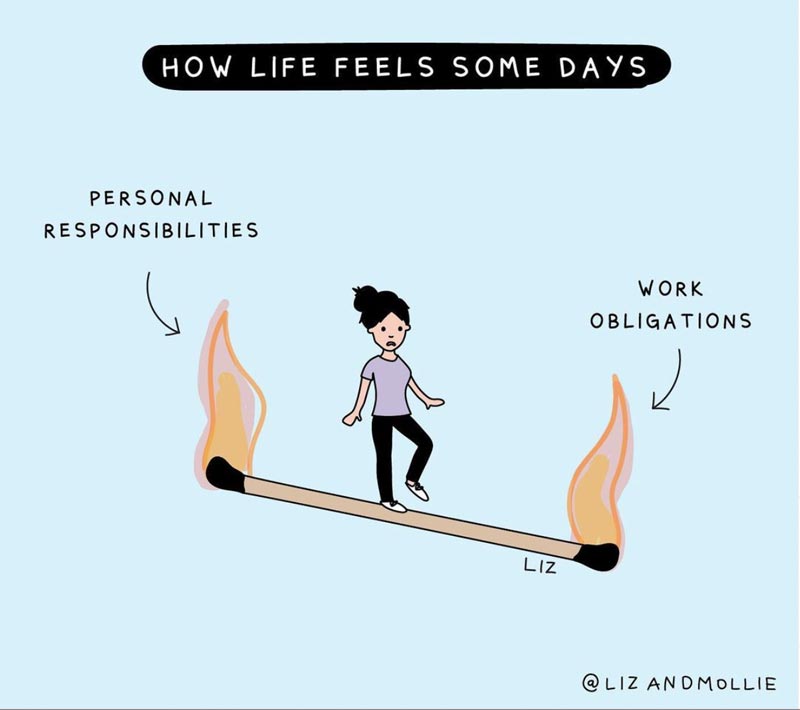Hi everyone, I’m Saralyn Hodgkin. And this is the podcast to practice your leadership.
There’s a documentary on Netflix called Athlete A. And there’s this moment in Athlete A, where Jennifer Sey, 1986 Olympian, is recounting her story of watching Kerri Strug, in the ’96 Atlanta Olympics go for the gold.
And I can’t help but share here, what came up from me on that. So she’s recounting it saying, Kerri Strug, she’s about to go for the vault. She’s the last one going. And so she runs down does her vault, lands, but because she is so injured and so visibly injured, she falters. But she gets to go again. And so everyone’s cheering, everyone’s cheering her on.
And so you can feel the tense moment if you go, if you have Netflix and you go watch it, it’s at the one hour mark or like one hour, six minute mark, you can watch it, they do a better job than me recounting. But she goes again, she does her vault thing and she lands it, she lands it. And as soon as she lands it, and it’s done, she falls right to the ground. And she is crawling, this powerful athlete is crawling off the mat. And she’s scooped up ’cause she can’t walk. And we learn that she gets the gold and everyone’s cheering.
But how perverse is it that we have expected and cheered on this young woman to completely destroy her body in order to get the gold. And this is what Jennifer Sey is recounting, that as a former Olympian, she’s seeing everybody cheer on, Kerri Strug, but in her mind, all that’s going on is: “Really?”
And I gotta say, when I think of that, I think of burnout right now. And the conversations we need to be having right now to address and acknowledge all the streams that are contributing to burnout, and how the costs are generally held by the individual. And not the organization, not the sector, but the individual. I can’t help that as change agents, as as people who are trying to make a difference, as people who are bringing their emotions, labor, and intelligence to these organizational entities who are trying to foster change or work in complexity, that some of us are just crawling off the mat, while others are cheering us on. Even though we’re breaking our legs.
We’re just trying to meet expectations, and it is killing us. It is damaging our bodies and our families. And our, our psychology, and our emotionality. It’s damaging us. And so where is the conversation for organizations to say hold on a minute. We’re a place where people are bringing their whole selves, trying to get stuff done, and burning out.
What do we need to address? What do we need to acknowledge? How do we need to change? What norms need to shift? What are some of the hard conversations we need to have as an organizational entity so that the cost don’t keep rolling downstream to the individuals who then carry it. When they come off the mat. When they come off the clock. They’re carrying it into their families, into their communities into their worlds.
I’m a bit pissed off about the conversation that people are having about burnout, myself included. And the conversation I’ve had with all of you, with myself, around burnout. We talk about the stress cycle and moving through the stress cycle when you’re burnt out. We talk about boundaries, self care. When burnout becomes compassion fatigue, these are all without doubt, important conversations, no doubt, full stop. And – let’s bring in the “yes and” – I’m really pissed off about the conversation with burnout.
It’s like okay, I was listening to Adam Grant the other day, he was giving a talk to this organization. And one of the questions from the audience was around burnout. And his answer was, of course, we need to address this systematically and systemically and I’m like, yeah, I’m with you. And he said, okay, there’s three ways to cure burnout at scale.
So my pen is right at hand, like I’m listening to Adam Grant here, let’s take a listen. Number one, demand, what’s over stressing people. Let’s take those responsibilities off their plate. Find others who can come and share the load. Like let’s remove demand from Saralyn’s plate. Okay, yeah, sure. Not happening. Well sure, that’s one way.
Another way is control he suggested control. We can’t eliminate all the demands but let’s give you some flex time on how you tackle them. Let’s give you some flex on deadlines, what hours you work whatever it is, like let’s give you some sense of control. Since we can’t take away all the demands, let’s give you some sense of control. Okay, well I should already have that anyway, shouldn’t I? In order for me to have the power and clout to do my own damn job? Because part of us being in this relationship of employee/employer, you’ve hired me to trust me to do the damn job so I should have control over how I do that already right?
So I got a little pissed off. And then third way is support. I think that’s how he termed it, was support. Well let’s put supports in place because you’re struggling, so here’s some resources available, here’s the employee assistance program, here take a recharge day. He quoted someone something that he heard from somebody around, it’s just as okay to take sick days as it is sad days and you know, trying to norm mental health is just as important as that cold, or broken leg, or whatever else you got going on. Right?
Okay, totally. Changing the cultural norms around what it means to take a sick day versus a sad day, all equally great. I’m with you. And I know that needs to change, totally with you, put in supports, totally with you. If you read his article on languishing, he’s putting some language to this. Totally with you. And I’m still pissed off. I am still pissed off with the conversation, or the lack of part of the conversation of burnout, and granted his talk was not on burnout. Granted, this is one little question.
I’m not pissed off at Adam Grant. It’s just, using his words, it made me rethink the word burnout. Hence, here’s a plug for his book Rethink. So what’s pissing me off here is that there’s a fourth element here that is not added to his list of demand, control, support, which is the word address. Address the shit that is at a systems level pissing us off and, and eroding our resilience and lessening our window of tolerance and, and triggering us to even have further stress. Like, can we have conversations in our organization, in our teams around cataclysmic climate change, and how what we do on a daily basis is contributing to that much less? Oh, my God, it’s real. And it’s out there. And it’s weighing me down.
Oh, my goodness, can we actually have real conversations that systemic racism is every where? Including this team, including in myself, including in this organization? Can we actually address or at least acknowledge maybe, maybe that’s a fifth word is acknowledge that this is something that’s seriously contributing to the feelings and realities of burnout at a self level? And I would even probably guess, for some a team’s level, and at an organizational level.
But can we carve out time intention, like in your key performance indicators, like if you want to get real clear, right in your key performance indicators, that also link to the percentage of time that you use in your job role, that can we say that 10% of your time goes to addressing and acknowledging the big systems issues that contribute to your burnout, and that we can talk about burnout, not just in myself, but from a nested circle view, right, everybody? Talking about it from self? And that’s where you go into self care, and boundaries, and etc. But can we then also talk about burnout at a team level, please?
I know some teams who are doing this and they’re making real changes about how they use their time, they are creating no lists. Okay, no lists. No, we’re not doing that anymore. We can’t, there’s too much going on. Something has happened in the last few years, we’ve all been witness to it, and embodied the complexity that has risen, that has elevated and shows up in our lives, and our work ,in the constituents who we serve, in the way that we’re just trying to facilitate the damn workshop. Complexity has just gone up 2 million notches. And there’s a bunch of contributors to that. Can we actually carve out some time to address that that is a reality?
And we need to start creating no lists. We are actually going to creatively deconstruct that we do this work, even though it’s going to affect how we generate revenue, even though it’s going to affect some of what we really yearn for, and that continues to feed our egos, even though it’s going to affect our work, we need to say no. Why? Because we need to address all of these issues that are coming at us, and that are creating burnout. It’s not, we just need to release the demand for these overstressed people, we need to just give a little bit of flex time to you that you should already have, we need to just put in some supports, no, we need to actually address and acknowledge some of these cultural and structural issues that are contributing not just to the person feeling burnt out, and usually being the receptor.
They’re the ones who feel the effects of the organizational costs of not dealing with some of these issues, right? The costs are individual, because they’re individual, and where are the conversations to address and acknowledge and roll the shit back upstream to help the organization or the collective team to feel those costs? We’re going to have to say no to this. Why? Because the cost shouldn’t come on to this individual. There’s an HBR article out there that talks about this, that the individual costs are real.
Can we acknowledge and address this at an organizational level, where it’s not just taking some responsibilities off the plate of people and releasing their demand, but it’s making team and organizational decisions, to release these pieces of work? That it’s a team and organizational position to address these systemic and root issues that are a part of our daily lives around social injustices, for example? Oh, my goodness, are we having those conversations? How is that showing up? And how is that burning out the team, burning out the individual?
I did a podcast on the great resignation, people are leaving their jobs, grass is greener, right? And I’m overwhelmed here. And I’m not liking it heren and the burnouts too big, and so, or it’s just a time for me to enact change in my life, whatever the reason is. But part of what’s going on is the connection of the great resignation and burnout. It is real. There is this reality that in this job, I am getting burnt out. And so I’m leaving, I’m going to stop just treading water here. Because this is going nowhere good for me. I’m burning out, my family’s feeling it. Now I’m going to go off and go to a new job.
Thank goodness, I found something, and I’m hired, and great. And I’ll go through that transition, the stress that comes with it, but it’s new. But as you move from a focus of burnout, as you move in, you shift to that new organization, that new rule, does the conversation about burnout change? Does the conversation change, about actually addressing and acknowledging some of these elements that are serious contributors to our burnout, that goes beyond our key performance indicators and our percentages of our job roles, and that are actually systems issues?
That outer circle of the concentric circles that are affecting the way I can actually even show up because the complexity of what’s going on. I’m holding it in my heart, in my gut, in my head, in my work. So from a place of burnout, we can do some small things by turning off our videos and practicing our own boundary statements. All of that is super important.
What I’m feeling futility around lately, is the organizational and societal norms that continue to oppress the conversation, that the costs on individuals are so significant, that it’s creating the stress and the burnout that we feel and carry forward in our families. And that there is something here that goes beyond demand, control, support to address and acknowledge as a team, which means that we need to have some really hard conversations as a team, as an organization.
It means that we need to have some of these tough conversations lead to hell no lists, it means that we need to create spaces to have conversations around the emotions of racism. It means that we need to have conversations around the complexity of our time in our teams, in our organizations, because we spend such a significant amount of time, and our emotional labor, that there is a responsibility to hold organizations and teams accountable to have the conversations of cultural and structural issues.
That is more about my self care. But it’s about how we structure our entities that exist to create change in the world in some way. Creating change through our organization shouldn’t oppress and burn us out.
Thanks all, I’m Saralyn. You can find me at holonleadership.org. I walk alongside you as you practice your leadership.



 Apple Podcasts
Apple Podcasts Spotify
Spotify Google Podcasts
Google Podcasts